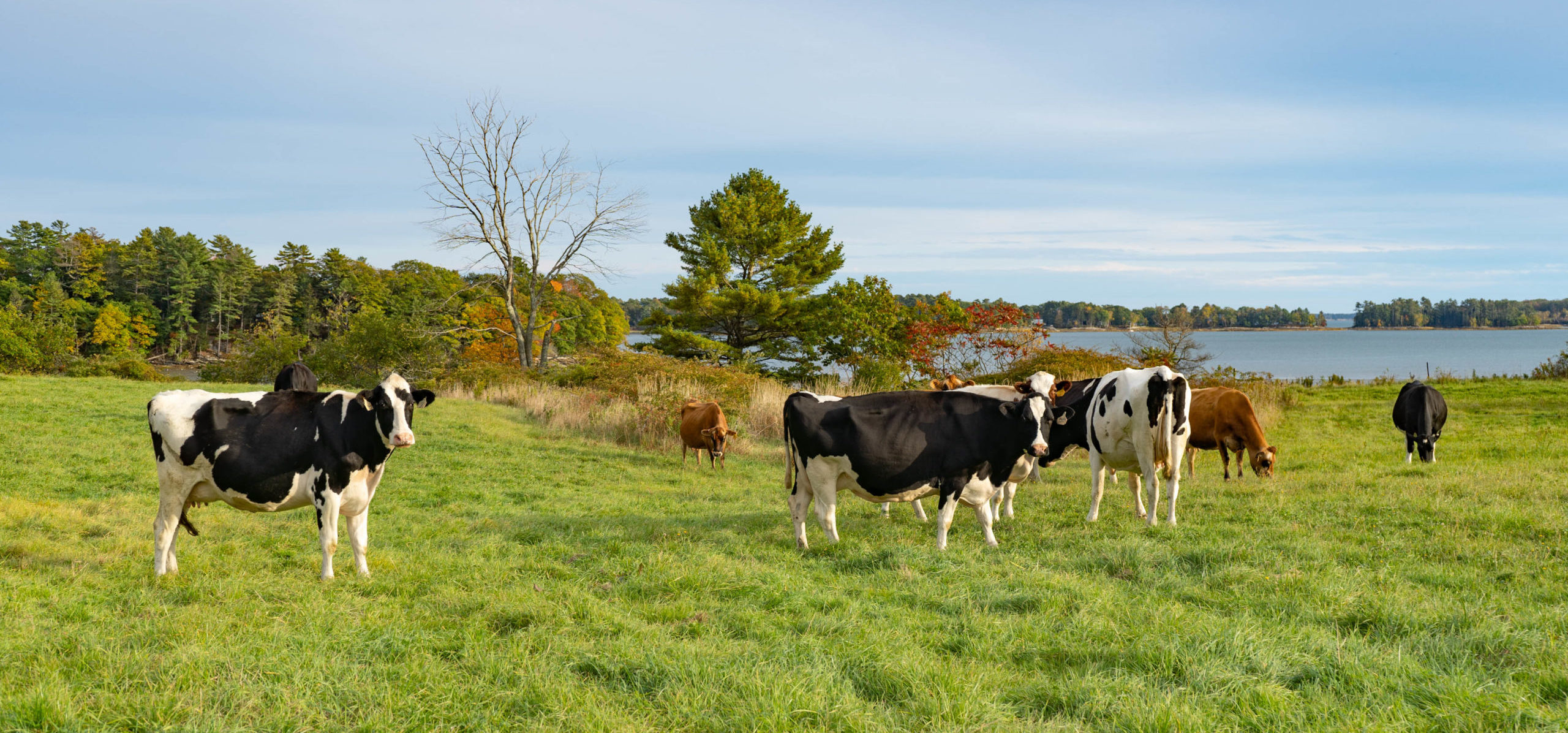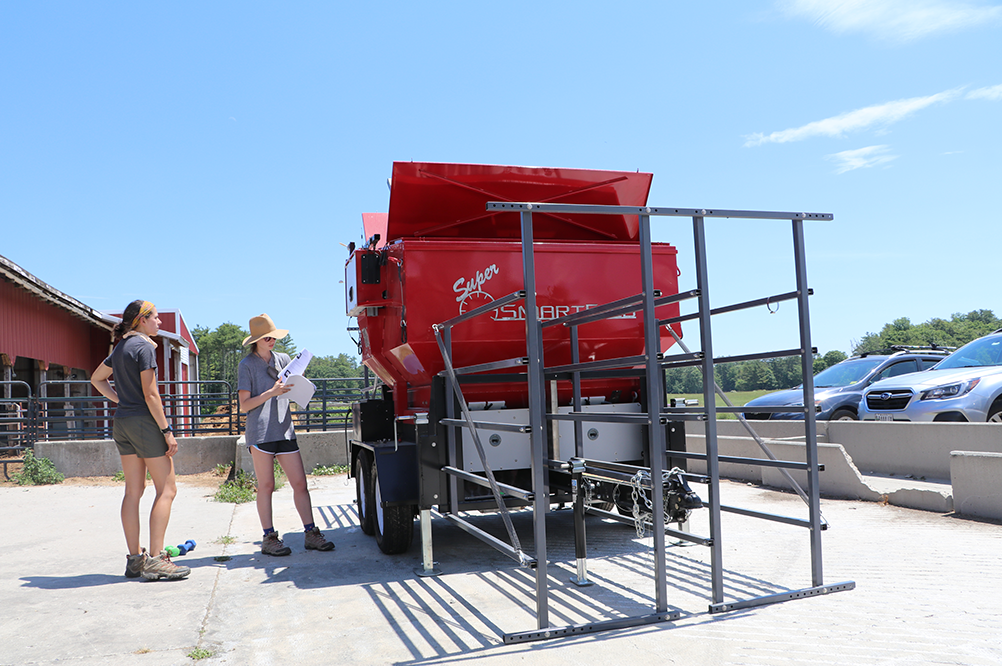Can Seaweed Curtail Effects of Cow Burps?
Studying a new way to reduce methane emissions
By Leah Puro, Agricultural Research Coordinator
The B3 (Bovine Burp Buster) Project begins this summer at Wolfe’s Neck Center to study the effect of adding seaweed to the diet of dairy cows on reducing methane emissions. This project is a collaboration between Wolfe’s Neck Center, Bigelow Laboratory for Ocean Sciences, the University of New Hampshire, University of Vermont, Colby College, and Bates College.
In livestock production, methane emissions come from feed supply, processing, transportation and emissions from the cows during digestion of grasses. Cows have four compartments in their stomachs to digest the tough grass fibers. The first compartment is the rumen. Microbes that live in the rumen break down the grass and release methane. That methane is released from the cow in the form of cow burps. On average, 44% of the total global livestock methane emissions come from the cows during this digestion process (FAO).

Many livestock farmers already feed kelp products to livestock, including our dairy farmers at Wolfe’s Neck Center. Kelps and seaweeds are high in micronutrients that aid in immune system function and overall animal health. We will be testing seaweeds that are native to and produced on the coast of Maine, and have the potential to reduce methane emissions from the cow digestion process.
At Wolfe’s Neck Center, the experiment uses two mobile feeder trailers that will follow the cows as they make their way through the pastures. These trailers have devices that can read an ID chip in the cow’s ear to identify each cow in the study. One trailer contains the seaweed feeder and automatically dispenses the correct seaweed ration based on the cow’s ID tag. The second trailer measures the methane emitted from the cow burps. The researchers will collect data on milk production and milk quality for each cow to understand how the seaweed affects production and compare them to a baseline. Blood, fecal, and urine samples will be taken to monitor animal health during the experiment. Researchers will also measure the amount of grass in the pasture before and after the animals graze to measure how much each animal eats in a day.

Through the B3 Project, Wolfe’s Neck Center is contributing to science and innovation, hosting interns to provide on-farm research experience, and educating through community engagement to share our results with other growers, other organizations, and our visitors.
This year we are hosting two research interns to assist with the on-farm research projects and to participate in the larger OpenTEAM community. The internships provide undergraduate and graduate students the opportunity to learn how to conduct on-farm research trials, connect with farmers, academics, and industry partners, and to learn about agricultural research from the perspective of the researcher and the producer.

As the new Agricultural Research Coordinator at Wolfe’s Neck Center, I hope to use my diverse agricultural background to support not only the B3 project, but the growing number of research projects coming to the farm. My farming journey began on a diversified vegetable farm in the mountains of Northern Argentina, then to farms in South Carolina, Vermont, and the Hudson Valley. I was swept away by the natural cycles, the connection to the earth, and a strong tie to the community through nutrient dense, beautiful, fresh produce and meat. Captivated by plants and soils, I went for a Masters of Science in International Agricultural Development from the University of California Davis. As a graduate student researcher, I conducted research projects in Vietnam and Cambodia with the International Center for Tropical Agriculture and in California with the University of California Cooperative Extension. These projects shed light on how fragile our agricultural system is in the face of a changing climate. This led me to Stone Barns Center in New York where I managed livestock operations (cattle, sheep, goats, pigs, poultry) on over 300 acres of public land and contributed to the development of a long term monitoring program through a partnership with New York State to assess the impacts of the multi-species grazing system on soil health and insect, plant, and bird biodiversity.
Now at Wolfe’s Neck Center, I am coordinating the on-farm research trials with our academic and institutional partners, working with a cohort of research interns, translating our research into educational programming and connecting with the larger regenerative agriculture community through OpenTEAM. I was drawn to Wolfe’s Neck Center’s dedication to education, community, research, and the commitment to agricultural practices focused on soil and ecosystem health. Many of the existing regenerative practices are indigenous techniques that can be validated and enhanced with data, which may lead to policy change and influence decision making. Researchers, farmers, tech developers, and industry can join together to conduct research and broaden our understanding of these regenerative practices to contribute to healing our food system and planet.
This article was originally featured in Field Notes, our 2020 annual newsletter. Click Here to read the full newsletter.
← Back to Blog